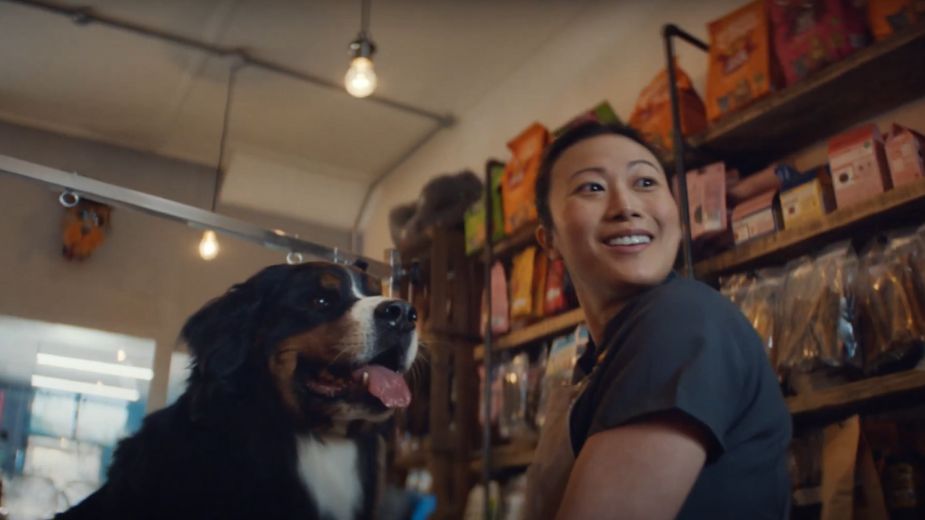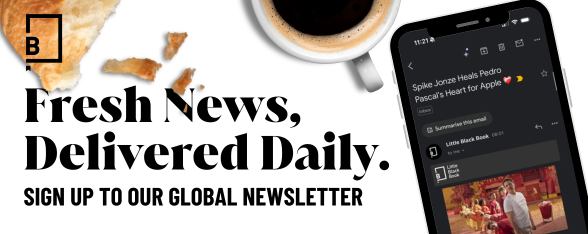
How BT Found Its B2B North Star

BT. It’s a British institution. The clue’s in the name - British Telecom. Its history dates back to the formation of the British Telegraph Company in 1846 - the world’s first public telegraph company, no less. Since then, it’s been a foundational strut of the country’s communications landscape - whether as part of the General Post Office or as the BT brand, which was launched in 1980. That brand has also woven itself into British culture, with classic ads and slogans that have become popular catchphrases, such as ‘It’s Good to Talk’.
And now, BT is going through yet another evolution. After decades of serving consumers and businesses, it’s been transforming into a B2B-facing brand, making way for its BT Group stablemate EE, which is taking on the mantle as the flagship consumer brand.
The decision to make the change was driven by the desire to capitalise on EE’s sense of modernity in the consumer space without wasting all that equity built up across BT’s history, as marketing director Simeon Bird explains. Now, the goal is to take all that heritage of reliability and leverage in a new innovation-led, customer-oriented positioning.
“It is probably one of the most well known brands in the UK,” says Simeon. “We have been around a long time, and that is not always necessarily a good thing. You think about the Googles and Facebooks and Apples - a lot of the really popular brands aren't actually that old, and that's part of the reason for the EE brand [move]. But actually, in the business market there’s that trust, that reassurance around what the BT brand offers.”
A Journey of Discovery
It’s a big shift for the brand, and it’s meant that the BT marketing team and its agencies have had to ensure that they’re all pointing in the same direction. To that end, BT brought on Kevin Chesters and Harbour Collective to help define BT’s ‘North Star’, to really understand what the brand means in this new B2B context - and to help refine the briefing process.
For Kevin, the challenge proved irresistible. It’s a cornerstone of British culture, and it’s also a brand that he knows well, having worked for BT as head of consumer planning in the early 2000s.
“What intrigued me was two-fold,” he says. “One: how to find the cohesive and uniting North Star for a brand that is so diverse and complex in its audience base and product set. The task was domestic and international, BT serves every business from the largest enterprises, government departments to the smallest SMEs. And two: I am motivated by giving B2B brands a true heartbeat and emotional grounding. B2B brands are often seen as the poor relations, but the research shows that they are actually more emotionally driven than their B2C counterparts. We wanted to work with the BT team to find the inspiring and motivating foundation for everything they would do going forward when they decoupled from EE. Beyond ads, beyond comms. Those things come later after you’ve defined your true brand North Star.”
Finding this North Star was no small task - distilling a complex organisation with a long history and a new mission into an undeniable brand expression. However, it should be noted that BT’s transformation starts from a strong foundation. BT already has a strong history of serving businesses, and already in the B2B sector its first choice consideration score is 33%, with its nearest competitor at 15%.
“It’s a really, really strong B2B brand,” says Simeon. “We've always worked with businesses, but now it was exclusively the business brand. So that obviously gave us a great opportunity to work out how we actually take full advantage of that opportunity in the B2B division. The reason that is an opportunity is because, while we already used the BT brand in B2B, most of the brand strategy - the way the brand operated, behaved, looked and advertised - was driven out of the consumer division. And so this was actually our opportunity to sort of reposition the brand to be more focused on our business audiences.”
So this wasn’t a makeover exercise, but rather a journey of discovery, as Kevin explains. “We have a simple methodology for getting to a North Star. It first involves identifying the ‘sea of same’ in a category – the repeated tropes and cliches that everyone tends to use. Then we identify what it truly is that customers buy or buy into versus just what the product or service is. Finally, this tends to unearth what is hiding in plain sight that a brand can own or develop all its behaviours from. In BT’s case we worked incredibly closely with the stakeholders and the insight team to analyse what BT could truly ‘own’ in order to achieve its longer-term ambitions. We worked collaboratively with the key stakeholders at every stage – a bit of a challenge during lockdown (but we managed it!)”
In order to get to that North Star point, BT shared with Kevin masses of data from focus groups, brand tracking and data - first-party data from speaking to customers and third-party data, which he was able to refine and distill. And what that’s resulted in is a vision that’s both forward-looking but rooted in BT’s experience, which gives it a sense of legitimacy.
Simeon says, “What I found really, really valuable about working with Kevin was that rather than discarding the old, discarding everything we had and that heritage, it was actually more a case of looking at our customers and saying, ‘How is it that we can create a brand position that's exciting, new and motivating, while capturing the spirit of what BT is today, but also what BT wants to be?’.”
Meeting the Mark Makers
So what did they uncover? A new vocabulary and clarified sense of purpose. That ‘North Star’ can be summed up as “the confidence to do the incredible”, the brand role is “the universal guide” and the brand design target audience is “the mark makers”.
To unpack all of this, it helps to start with the audience first. The mark makers represent an idealised, vision of hardworking, risk-taking and entrepreneurial business people. It’s deliberately aspirational - both in terms of BT’s ambitions and also the ambitions of its customers.
But, says Kevin, these mark makers are not a mirror of the BT brand per se. “Too many brands think that their brand should be a reflection of their target audience. But customers need a partner with complementary skills. We analysed multiple sources from McKinsey to Forbes, HBR to Wharton, to identify the key skills that will define successful businesses in the next decade. Then we distilled those skills into the key definition of people who wanted to leave a mark/legacy on the world. It was actually a combination of all the archetypes that want to make a difference. Then the key was to identify the true BT characteristics that complemented them – the rigour behind the risk, the innovation behind the imagination. The ‘mark makers’ are the customers that BT needs to achieve its 2030 vision of being the most trusted connector in the world.”
Simeon recalls a particularly apt comparison that Kevin brought up during the process, to demonstrate that complementarity. “I think, ultimately,the position that we came to was to complement those mark makers. Something like, Steve Jobs being the figurehead for Apple, while they had Steve Wozniak who was the engineer behind the scenes supporting him. It was meant to be a bit like that, where we were the Wozniak to the mark makers’ Steve Jobs.”
So BT’s purpose and brand North Star emerged as a counterbalancing support to this dynamic audience of hustlers and entrepreneurs determined to leave their mark on the world. Where the mark makers make ambitious leaps, BT is the trustworthy, reliable, experienced support network that allows them to flourish. Thus the brand’s role as a ‘universal guide’ and its encouraging purpose ‘the confidence to do the incredible’.
Strikingly, it’s a proposition that’s very much rooted in emotion rather than the dry functionality stereotypically associated with the B2B sector. “The thing I really liked about working with Kevin was that we were thinking about it from a human being mindset rather than that really dry practical perspective,” says Simeon. “Ultimately, business decision makers are human beings and there's this emotional element - in that, they don't want to get it wrong. If you feel that you trust the brand, and that if you have a good feeling about that brand, then it will influence your decision. It's not purely based on price. And actually, if you're talking about the majority of businesses, which are small, it's not like they've got a big procurement team. They've got to make a decision quite quickly, because they’re opening a new office. They don't have lots of time. They just need to go ‘right there's a brand that does support businesses’.”
Following the North Star
With the North Star and audience defined, the next step was to ensure that there was buy-in from the rest of the BT organisation internally and from the brand’s agencies, Wunderman Thompson, NOW and Sideshow. They brought everyone together in a hotel to walk them through the thinking and to persuade them to consider all of the brand’s marketing going forward, through this lens.
Moreover, with this new strategic structure in place, Kevin was keen to ensure that all this hard work didn’t go to waste through poor briefing. According to the Betterbriefs project in 2022, a third of ad budgets are wasted due to bad briefs and misdirected work - and the team were determined to avoid this frustration.
“I worked with the strategists at BT to redefine the whole briefing process – including the tools and training – so that work could deliver against the brand’s ambition and North Star. This involved a rather interesting project to interview the clients and agency stakeholders who both wrote and received briefs to understand what was (and what wasn’t!) working. A North Star is no good if you don’t land it. Too many times these brand projects start and end with some adverts. We were determined on all sides that this wasn’t going to be the case.”
Already, that strategic ground work is playing out in the work, with campaign platforms like ‘BT Means Business’ and a focus on reliability, like ‘Unbreakable Wi-Fi’. Having a really concrete sense of the brand’s meaning and its role in customers’ lives have helped create strong, meaningful ideas and lines. ‘BT Means Business’ is a case in point as Simeon points out - it’s not overly clever, it’s easy to understand and it’s efficiently packed with meaning.
“What I think really shows that it really resonated well is if you see our advertising,where we've taken the strategy into our advertising,” says Simeon. “When it's discussed internally, we use the phrase mark makers - the agencies use it and the BT teams use it. If we’re talking about ‘Unbreakable Wi-Fi’, it is brought to life in the advertising through how we enable our mark maker to continue to flow through their business,despite any potential interruptions because it's ‘unbreakable’.”
But BT isn’t just using this deep dive and North Star to inform its advertising, it’s also helping internally too. They’ve created a customer charter, a list of four behaviours, and it’s also been a helpful lens through which to their internal communications too.
Given the proliferating demands on marketers to produce more content, keep track of more platforms, deliver more concrete results - not to mention the day-to-day business of firefighting and responding to new challenges - the idea of pressing pause to really dig down may seem like an unnecessary luxury. But for both Kevin and Simeon, it’s really important for a brand to check in with itself periodically.
“For me, I can’t understand why any client embarks on a brief or project without knowing its core North Star. It is the foundation that can save time, budget and blood pressure. As my gran would say: ‘measure twice, cut once’.”
In this case, BT had a huge catalyst as the alternative was to just hope that strategies devised for a consumer audience would work for a B2B audience. But in any case, says Simeon, even without such an obvious push, it’s something they would do - pointing to the recent brand redesign from four years ago.
“It's about reviewing the state of the organisation, asking who your target audience is. Do we still have the right positioning? Is the brand right? Is the way we’re set up and positioned right for our target audience? And, given audiences,culture, environment and the world we live in is changing all the time, it's fair to say that a brand would need to be open to adapting and evolving as its audience adapts and evolves.”












